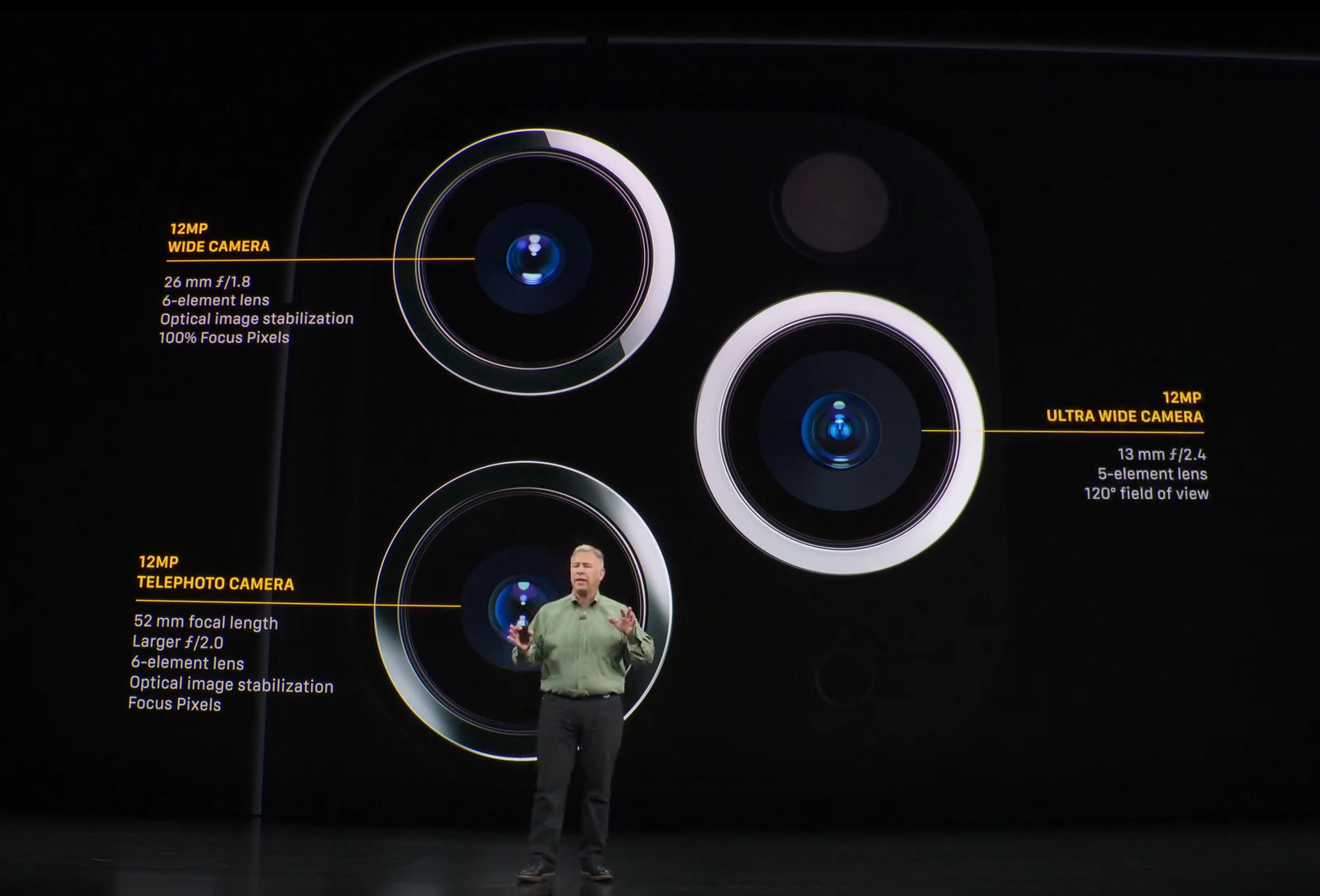On the back of the iPhone 11 Pro can be found three cameras. Why? Because the more light you collect, the better your picture can be. And we pretty much reached the limit of what one camera can do a little while back. Two, three, even a dozen cameras can be put to work creating a single photo — the only limitation is the code that makes them work[1].
Earlier in today’s announcements, Apple [2] showed the base-level iPhone 11 with two cameras, but it ditched the telephoto for an ultra-wide lens. But the iPhone Pro has the original wide, plus ultrawide and telephoto, its optical options covering an approximate 35mm equivalent of 13mm, 52mm and 26mm.

“With these three cameras you have incredible creative control,” said Apple’s Phil Schiller during the stage presentation. “It is so pro, you’re going to love using it.”
Previously the telephoto lens worked with the wide-angle camera to produce portrait mode effects or take over when the user zooms in a lot. By combining the info from both those cameras, which have a slightly different perspective, the device can determine depth data, allowing it to blur the background past a certain point, among other things.
The ultra-wide lens provides even more information, which should improve the accuracy of portrait mode and other features. One nice thing about a wide angle on a dedicated sensor and camera system is the creators can build in lots of corrections so you don’t get crazy distortion at the corners or center. Fundamentally you’ll still want to back off a bit, because using an ultra-wide lens on a face gives it a weird look.
While we’re all used to the pinch-to-zoom-in gesture, what...